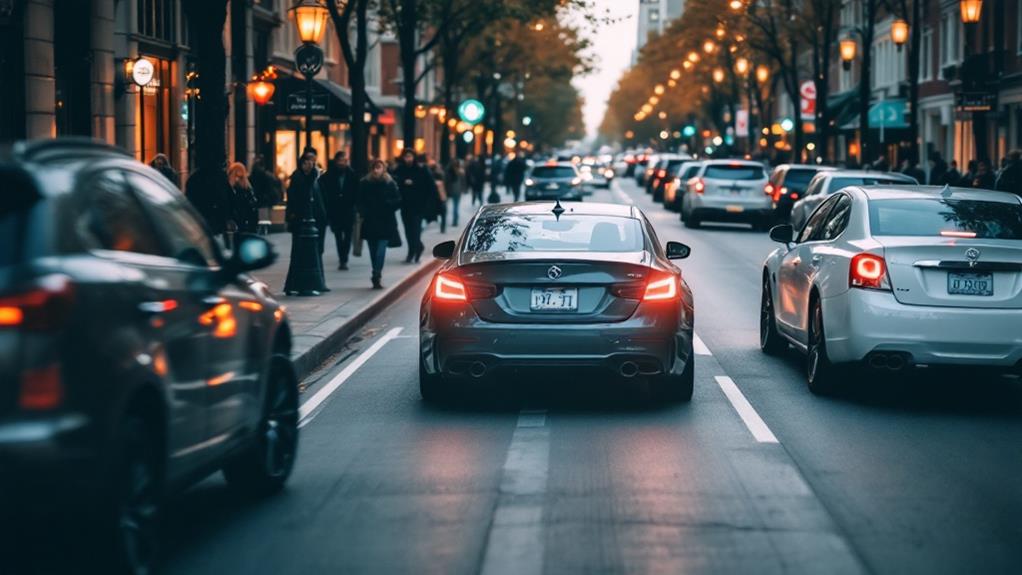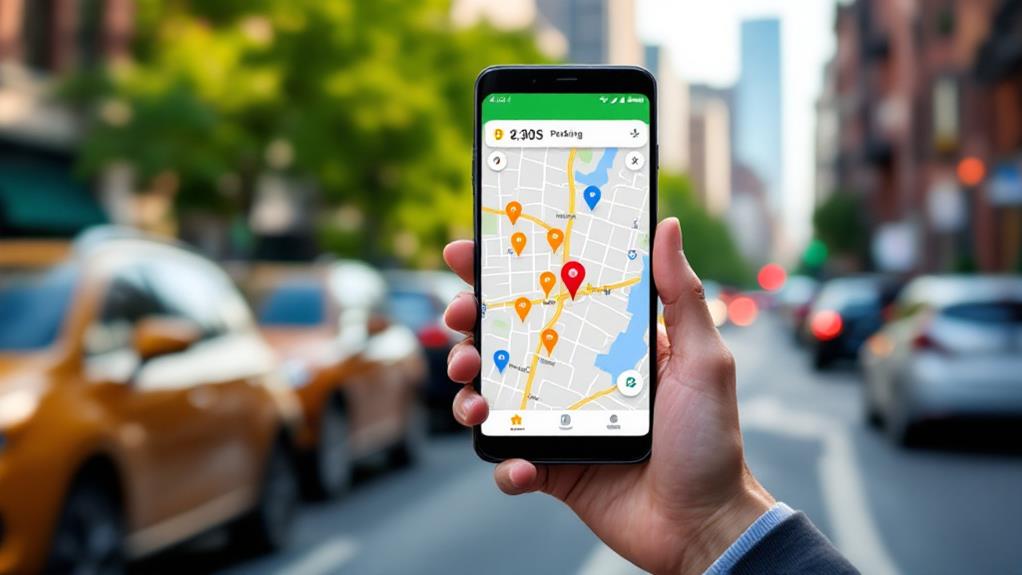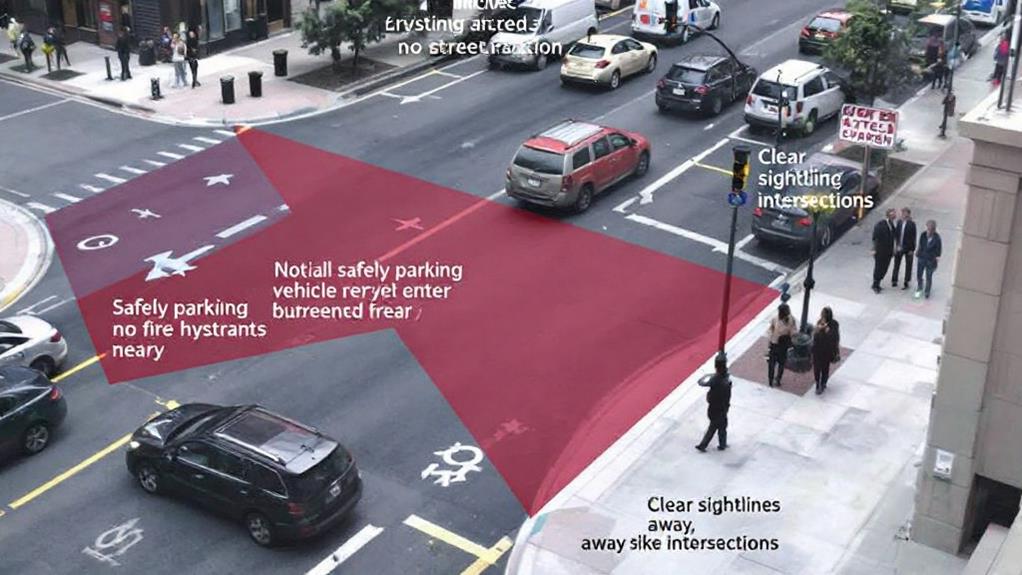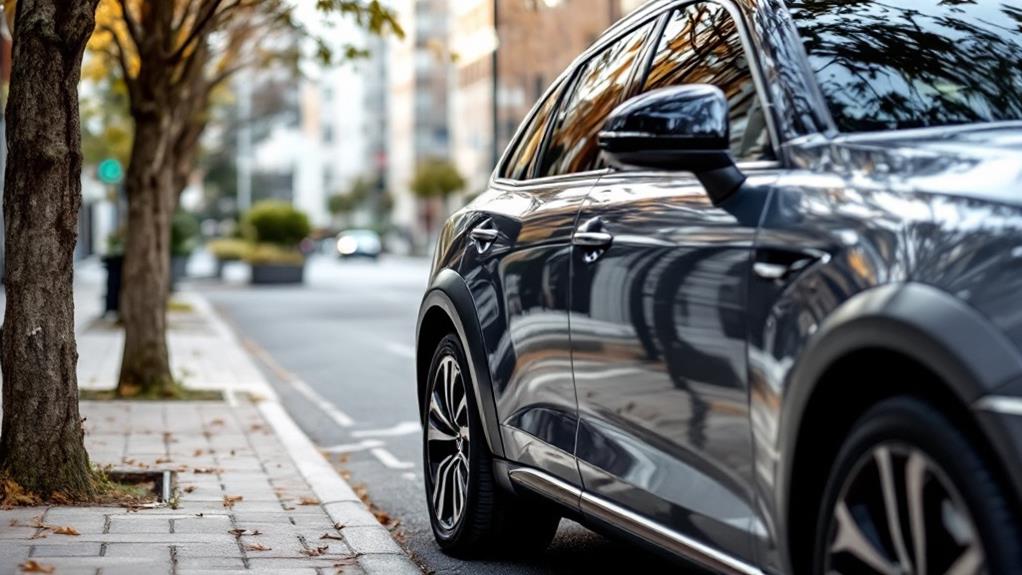Essential Tips for Safely Street Parking Your Car

When street parking your car, prioritize well-lit areas with regular foot traffic near businesses or homes. Opt for corner spots, which offer better visibility and maneuverability. Avoid parking under trees to prevent damage from sap, bird droppings, and falling debris. Hone parallel parking techniques to fit into tight spots smoothly. Always be aware of local parking regulations and time limits. Remove precious items from sight and lock your vehicle securely. Consider installing anti-theft devices for added protection. Use parking apps to find spots and manage meter payments. Regularly maintain your car's exterior to combat environmental damage. These tips are just the beginning of ensuring your vehicle's safety while parked on the street.
Choose Well-Lit Areas
When parking your car on the street, choosing well-lit areas is essential for your safety and your vehicle's security. Opt for spots that are brightly lit by streetlights or illuminated by nearby buildings. This simple step can drastically deter potential thieves and enhance your overall safety when returning to your vehicle.
Look for parking spaces near businesses, homes, or main roads with regular foot traffic. These areas tend to be safer due to increased activity and visibility. Avoid secluded or poorly lit spots that could pose unnecessary risks. Remember, criminals often prefer dark, isolated areas where they're less likely to be seen or interrupted.
Be mindful of your surroundings when selecting a parking spot. Steer clear of areas obstructed by large vehicles, dumpsters, or dense foliage, as these can provide cover for potential wrongdoers. Instead, prioritize open spaces where you can easily see your car and the surrounding area.
Utilize Corner Spots
Many drivers overlook the benefits of corner spots when parking on the street. However, these parking spots offer several advantages that can enhance your car's safety and your peace of mind.
When you choose a corner spot for your vehicle, you're giving yourself better visibility and reducing the risk of damage. These locations provide a clearer view of approaching traffic, making it easier to enter and exit your parking space safely. You'll also minimize the chances of your parked car being blocked or hemmed in by other vehicles.
Corner spots offer more room for maneuvering, which is especially helpful when parallel parking in tight urban areas. They also decrease the likelihood of dents and scratches caused by careless drivers opening their doors next to your vehicle.
Perhaps most importantly, parking in a corner spot can tremendously reduce the risk of collision when backing out. With improved sightlines and less passing traffic to contend with, you'll find it easier to safely traverse your way out of the parking space.
Avoid Parking Under Trees

While corner spots offer numerous advantages, it's equally important to reflect upon what's above your parking space. When it comes to parking safety, avoiding spots under trees is pivotal to protect your vehicle from various risks.
Trees may seem like attractive parking spots due to their shade, but they can pose significant threats to your car. Bird droppings and tree sap can gradually damage your vehicle's paint and finish, leading to costly repairs. Additionally, parking under trees increases the risk of accidents during storms, as falling branches or debris can cause dents, scratches, or more severe damage.
To minimize the risk of hail damage, it's best to park away from trees, especially during stormy weather. The shade provided by trees can also attract pests like birds or squirrels, which may nest on or around your car, potentially causing further issues.
Tree pollen and leaves can accumulate on your vehicle, requiring extra cleaning and maintenance. By choosing parking spots away from trees, you'll reduce the need for frequent washing and protect your car's appearance. Remember, a little extra walking is worth the added safety and preservation of your vehicle.
Master Parallel Parking Techniques
For many drivers, parallel parking can be a formidable task. However, becoming adept at this skill is essential when parking on the street. To begin, position your car parallel to the vehicle in front, aligning your rear bumpers. Next, turn your steering wheel sharply to the right, guiding your car's rear end towards the curb. As you get close to the curb, straighten your wheels and continue backing up slowly. Adjust your steering as needed to center your car in the space.
Throughout the process, it's of utmost importance to check your mirrors and look over your shoulder to guarantee proper alignment. This technique not only helps you park safely but also allows you to fit into tighter spaces when parking near other vehicles. Remember to leave enough room for surrounding cars to maneuver.
Once you've successfully parked, double-check that all doors and windows are securely locked before leaving your vehicle. This is especially important when parking on the street, as it helps prevent theft and safeguards your car's security. By becoming proficient in parallel parking techniques and following these precautions, you'll become more confident in your ability to safely street park your car in various urban environments.
Be Mindful of Parking Rules

Parking rules can be a minefield for the unwary driver. To avoid costly fines or having your car towed, it's essential to familiarize yourself with local regulations before you park your car on the street. Start by researching the city's parking rules online or through official resources. Pay close attention to posted signs in the area, which often indicate time limits, permit requirements, and street cleaning schedules.
To stay updated on any changes in parking rules, consider downloading parking apps or regularly checking the city's website. Be sure to understand alternate-side parking policies, which may require you to move your car on specific days and times. Make sure you're aware of the consequences of violating parking restrictions, as they can result in hefty tickets or even vehicle impoundment.
When you park your car, double-check that you're not in a restricted zone or violating any time limits. If you're unsure about the rules in a particular area, it's better to find an alternative parking spot or use a designated parking lot. By being mindful of parking rules, you'll save yourself from unnecessary stress and financial burdens.
Protect Against Environmental Damage
Environmental hazards pose a significant threat to your car's exterior and interior when parked on the street. To protect your vehicle, consider applying a paint sealant or ceramic coating, which shields the finish from bird droppings, tree sap, and UV rays. Regular washing, especially after pollen or snowstorms, prevents long-term damage to the paint and clear coat.
When parking, use a windshield sunshade to block harmful UV rays and keep the interior cooler, extending the life of your dashboard and upholstery. While a garage or carport is ideal for protecting your car from hail, heavy rain, and snow, it's not always possible when street parking. Instead, look for spots under trees or near buildings that offer some shelter.
Don't forget about the underbody of your car. Apply a rust-inhibiting spray or undercoating to prevent corrosion caused by road salt, dirt, and moisture. These Parking Tips not only protect against environmental damage but also make your car less appealing to car thieves and reduce the risk of accidental damage from other people and drivers passing by.
Secure Valuables and Lock Up

Securing your important and treasured belongings and properly locking your vehicle are essential steps in safeguarding your car when street parking. When you're about to leave your car, always remove valuable items from plain sight. Either store them in the trunk or take them with you. This simple act can deter potential thieves and protect your possessions.
Before walking away, ensure all doors, windows, and the trunk are securely locked. It's also crucial to avoid leaving personal documents, credit cards, or identification inside the car to prevent identity theft. Trust your instincts when choosing a spot for Street Parking. If an area feels unsafe, it's best to avoid parking there.
To enhance your vehicle's security, consider installing an anti-theft system or device. These can significantly deter criminals and protect your car during Safe Parking situations. Additionally, never leave your vehicle running unattended, as this makes it an easy target for theft. By following these precautions, you'll greatly reduce the risk of break-ins or theft when street parking your car.
Install Anti-Theft Devices
With the rise in car thefts, installing anti-theft devices has become an indispensable step in protecting your vehicle when street parking. Start by investing in physical deterrents like steering wheel locks or brake locks. These visible devices make your car less attractive to thieves and can drastically reduce the risk of theft.
Next, consider installing an electronic engine immobilizer. This device prevents your car from starting without the correct key, adding an extra layer of security. For even more protection, a GPS tracking system can help authorities locate your vehicle if it's stolen.
Don't overlook the importance of window etching. By etching your car's VIN onto the windows, you'll make it harder for thieves to sell stolen parts. Additionally, an audible alarm system can startle intruders and draw attention to Suspicious Activity around your car.
Use Parking Apps and Resources

While anti-theft devices protect your car, smart use of parking apps and resources can save you time and money. Many cities now offer mobile apps that allow you to feed meters remotely and provide real-time parking information. These apps can help you find a safe spot to park on the street, reducing the risk of accidents or potential insurance claims.
Before visiting a new city, check their official website to familiarize yourself with local parking restrictions, schedules, and time limits. This knowledge will help you avoid tickets and fines. If you're staying in a residential area, look into obtaining a parking permit, which can simplify the process and give you more options for street parking.
Always take time to carefully read and understand posted parking signs. They contain pivotal information about permitted hours, street cleaning schedules, and other restrictions. By planning ahead and utilizing these resources, you'll quickly learn the local parking regulations and find suitable spots for your vehicle. Remember, being well-informed about parking rules and using available tools can vastly improve your street parking experience and keep your car safe.
Maintain Vehicle Exterior Regularly
Regular maintenance of your car's exterior is essential when street parking, as it's constantly exposed to the elements. To minimize the risk of damage, wash your car every two weeks. This routine cleaning helps prevent paint deterioration and protects the finish from environmental hazards.
Apply a lubricating metal conditioner to your vehicle's exterior to ward off rust and corrosion. This step is crucial paramount for cars parked in areas with high humidity or near saltwater. Keep supplies handy to quickly address common issues like bird droppings, bug residue, and tree sap. Prompt treatment of these substances will help maintain your car's appearance and prevent long-term damage.
In areas prone to severe weather, use snow covers or blankets to protect your windows from hail damage. This precaution is especially important when you're unable to park in a covered area. Don't forget about your car's battery health. Regular driving or using solar-powered maintainers can help keep it charged. By maintaining your vehicle's exterior, you're less likely to attract unwanted attention from foot traffic and potential thieves. A well-kept car also creates a more pleasant environment inside your vehicle during your daily commute.



